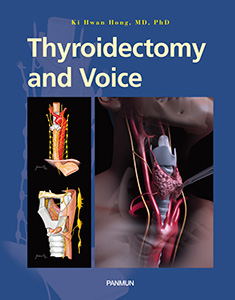About the Author III
Preface IV
Acknowledgments V
PART 1. Post - thyroidectomy syndrome(PTS) 1
01 Anatomical perspectives 3
02 Hormonal perspectives 25
03 Neuropsychological perspectives of PTS 33
PART 2. Role of the thyroid gland related structures in phonation 43
04 Role of the neck muscles in phonation -animal study- 45
05 Role of vertical laryngeal movements in pitch control -human study- 67
06 Roles of two bellies of cricothyroid muscle in pitch control -animal study- 81
07 Role of two bellies of cricothyroid muscles in speech production -human study- 97
08 Role of cricopharyngeus muscle in speech production -human study- 109
PART 3. Phonetic characteristics of thyroidectomized patients without laryngeal nerve injury 123
09 Phonetic features of hypothyroidism after thyroidectomy 125
10 Phonetic features of speech after thyroidectomy 147
11 Changes of oral vowel sounds and hyoid bone movements after thyroidectomy 163
12 Evaluation of swallowing function after thyroidectomy 179
13 Cepstral analysis of voice in patients with thyroidectomy 193
PART 4. Phonetic characteristics of thyroidectomized patients with laryngeal nerve injury 207
14 Endoscopic features of unilateral vocal fold paralysis 209
15 Diplophonia in unilateral vocal fold paralysis 225
16 Antero-posterior medialization thyroplastyfor unilateral vocal fold paralysis 245
17 Phonetic features in patients with bilateral vocal fold paralysis without tracheotomy 259
PART 5. Non-recurrent laryngeal nerves 275
18 Travelling characteristics of the non-recurrent laryngeal nerves 277
19 Coexistence of non-recurrent laryngeal nerves with inferior laryngeal nerves 295
PART 6. Others 307
20 Phonetic characteristics of patients with an ectopic lingual thyroid 309
21 Chyle leakages and characteristics of lymphatics in the central neck area after thyroidectomy 325
22 New diagnostic tool for thyroid cancer using Electrical Impedance Spectroscopy(EIS) 337
Index 353


